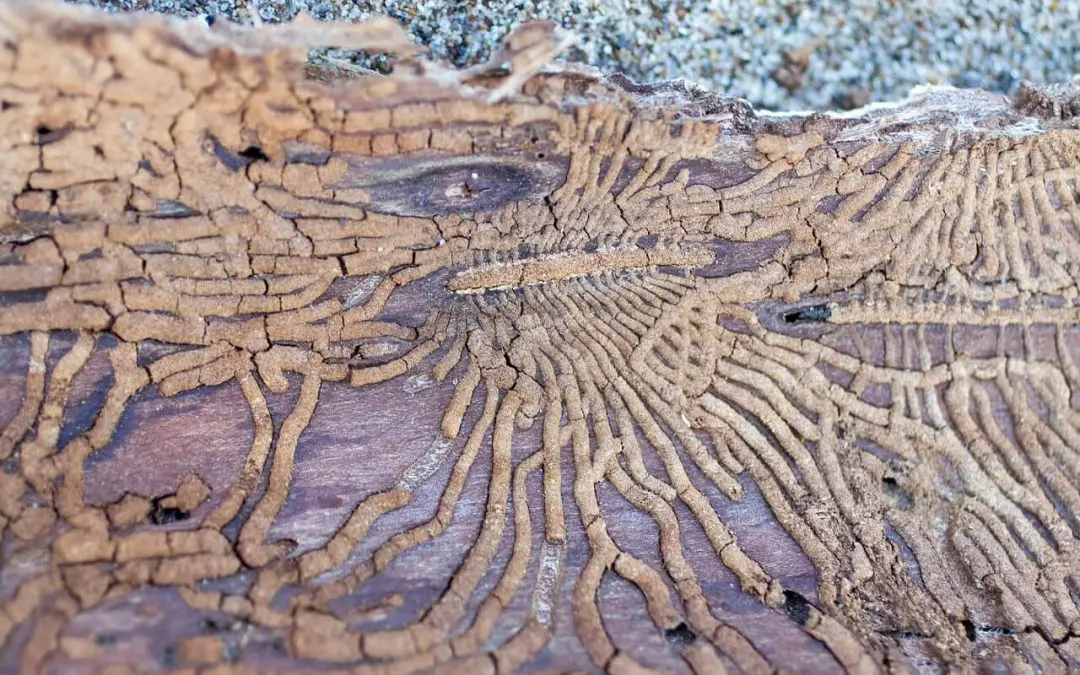Termites aren’t something most homeowners think about until there’s a problem. Unfortunately, by the time you notice the damage, it’s often already done. That’s why recognizing the early signs of termites is so important. The sooner you spot them, the easier (and less expensive) the fix.
Whether you’re doing a little home maintenance or just curious about what to watch for, here are some signs that might indicate termites are nearby.
Mud Tubes on Your Foundation are Definite Signs of Termites
One of the most common signs of subterranean termites is mud tubes. These are narrow, dirt-colored tunnels about the width of a pencil. You’ll often see them along foundation walls, in crawl spaces, or near exterior pipes.
Termites build these tubes to travel between their colony in the soil and the wood they’re feeding on inside your home. If you spot them, it’s time to take a closer look—or better yet, have a professional inspect the area.
Wood That Sounds Hollow
Termites tend to eat wood from the inside out, so you won’t always see damage immediately. A quick way to check for possible activity is to tap on wooden trim, baseboards, or flooring. If it sounds hollow or feels papery, termites might be to blame.
Sometimes, the wood feels soft to the touch or gives slightly when pressed. Even if everything looks normal on the outside, it doesn’t hurt to check now and then—especially in older homes or humid climates.
Discarded Wings Near Windows or Doors Are Signs of Termites
When termites swarm, they send out winged members of the colony (called swarmers) to look for new places to start a nest. You may not see the swarm itself, but you might find piles of wings around windowsills, doors, or light fixtures.
If you notice wings that all look the same—same shape, same size—it’s worth investigating. These swarmers are often one of the first visible signs that a colony is active nearby.
Small Piles That Look Like Sawdust
Drywood termites leave behind droppings, also known as frass. These droppings look a lot like fine sawdust or pepper and tend to collect below the area where the termites are feeding.
Take note if you spot small, grainy piles on your floors, windowsills, or attic. This is often a clue that termites are working just above or behind that spot.
Paint That’s Bubbling or Peeling
We usually associate peeling paint with moisture issues—and that’s true. However, termites also bring moisture with them as they tunnel through walls and wood. If you see blistering paint in areas that don’t usually have water exposure, it’s worth a second look.
This can be especially telling if the surface seems warped, soft, or discolored in just one area.
Sticking Windows and Doors
If a door or window that used to open easily now sticks or feels misaligned, there’s a chance it’s due to termites. As they eat through wood, they can cause slight swelling or warping, which affects how things fit.
Of course, not every sticky door is caused by termites—humidity and general settling can do that, too. But if it happens along with other signs, it’s best to get it checked out.
Quiet Clicking or Tapping Noises
This one’s subtle, but some people report hearing faint tapping or clicking coming from inside walls. This sound comes from soldier termites using their heads to signal danger to the rest of the colony.
It’s not something everyone hears, and it’s usually a last-on-the-list symptom. Still, if the noise is consistent and you’ve noticed other signs, it could be worth mentioning to an inspector.
If you’re seeing any of these signs—or even just want peace of mind—it might be time to schedule an inspection. Termites work quietly, but the damage they leave behind speaks loud and clear. Better to catch it early and stay ahead of the problem. Let us know if you’d like help.
FAQs on Signs of Termites
What attracts termites to a home?
Termites are drawn to moisture, wood, and areas where the wood touches the ground. Leaky pipes, clogged gutters, and untreated wood are common problem areas.
Can I treat termites myself?
Some store-bought treatments might kill termites on the surface, but they often don’t reach the colony. A professional inspection is usually the best route to fully eliminate the problem.
Are termites more active during a certain season?
Swarming tends to happen in spring and early summer, but termites stay active year-round—especially in warmer or humid climates.
Does homeowners insurance cover termite damage?
In most cases, it doesn’t. Termite damage is considered preventable with proper maintenance, so it’s typically not covered under standard policies.
How often should I have a termite inspection?
Once a year is a good rule of thumb, even if you’ve never had an issue. Regular inspections can catch problems before they get serious.
Emerald Coast Home Inspectors offers home inspection services to homeowners in Pensacola and surrounding areas, including wind mitigation inspections. Contact us to schedule an inspection today.

